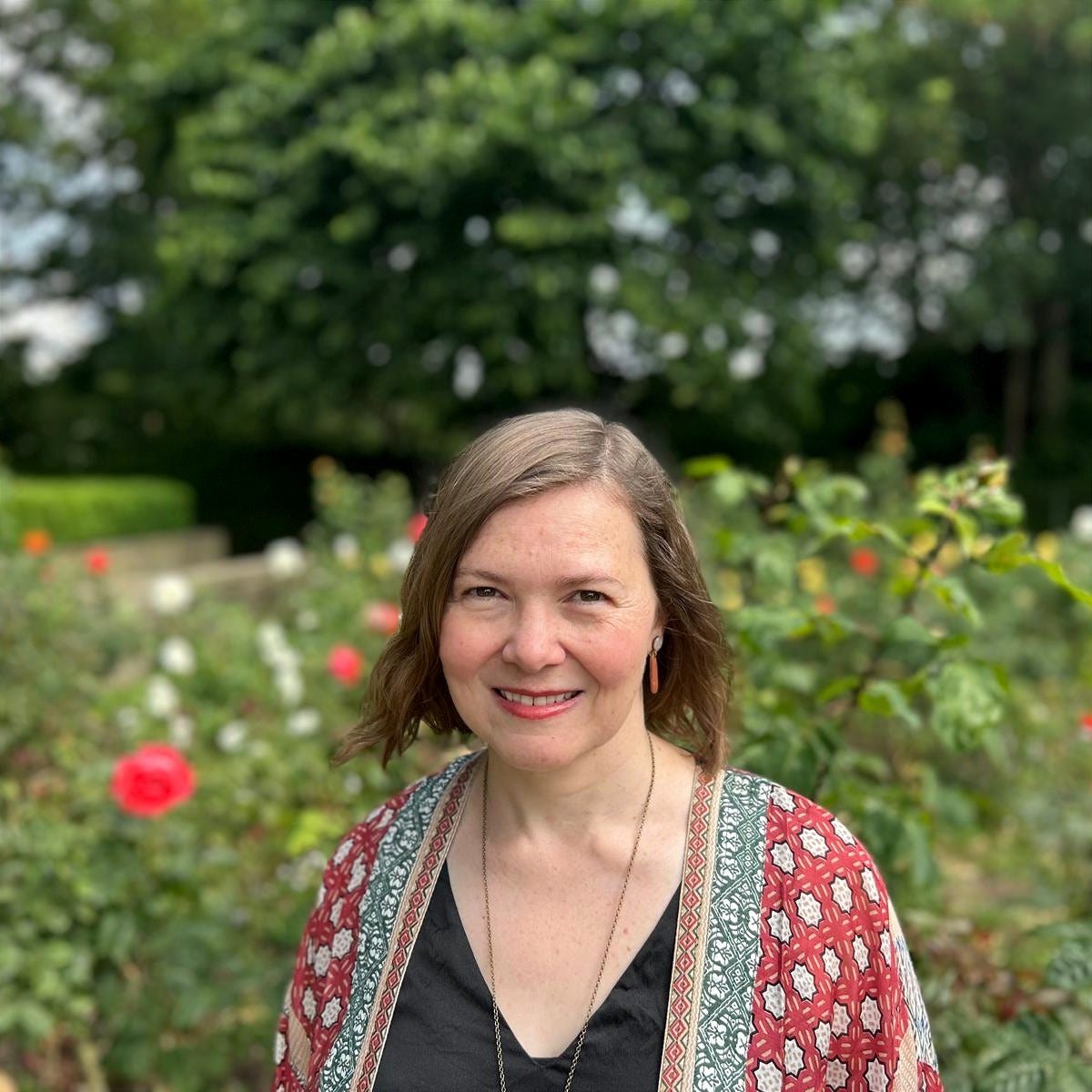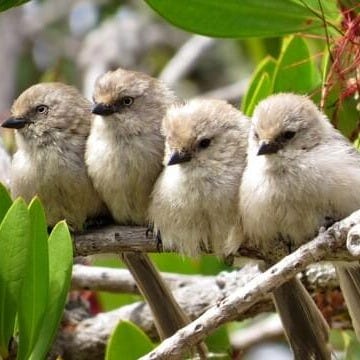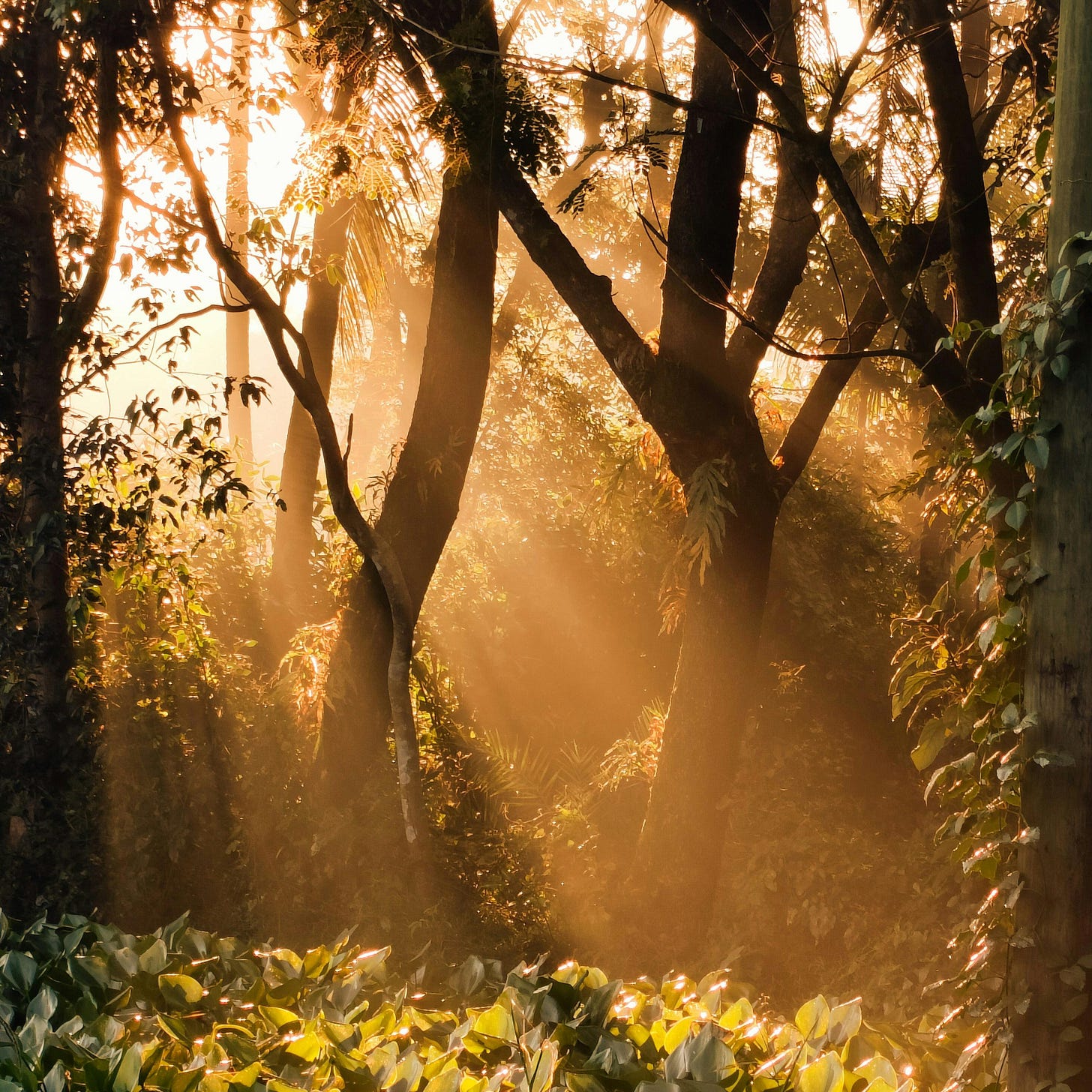The Lessons We Learn from the Nests We Build: shortlisted for the Wild Muse Nature Writing Prize 2024
What nature teaches us about starting again
“Time teaches us that the nests we build do not last forever, no matter how much care we put into them.”
Last year’s Wild Muse Nature Writing Prize attracted a collection of truly unforgettable voices. For me, each one was a reminder of how nature holds our stories, our questions, our quiet transformations. Over the past few months, I’ve been sharing selected essays from the longlist and shortlist, each accompanied by a short Q&A with the writer. These are pieces that stayed with me - perhaps an image, an afterthought. Often I felt myself humming with something true.
If you're feeling stirred by what you read here, the 2025 prize is now open for submissions and I’d be honoured to read your work.
Subscribe to receive future stories, reflections, and updates as they unfold.
This week, it’s a joy to share The Lessons We Learn from the Nests We Build by Roslyn Weaver, which reached the shortlist of the 2024 Wild Muse Prize.
I loved the way Roslyn’s essay threaded together nests and memory, birds and belonging. We move from a forest in Vancouver to a garden in Australia, as she explores the fragility of home and the resilience of community with an observant eye. I felt her writing invites the reader to see the sacred in the everyday, and to consider the homes we build.
I hope you enjoy this deeply reflective piece, and Roslyn’s insights in the Q&A that follows.
The Lessons We Learn from the Nests We Build
It was the brownish-green clump hanging from the tree that caught my eye. It was a sunny late spring day, and this was a favourite walk around Jericho Beach Park: up the short, steep hill, just far enough from West 4th Avenue to subdue five car lanes of traffic noise, and just far enough from the beach that most would not even realise this network of trails exists. I had been walking here regularly in the several years since moving from London to Vancouver, wandering down different forest trails, finding an endless storehouse of treasures in those deep and dark paths under firred towers.
Just off the path at the top of the hill I stopped, tracking movement. It was a hummingbird, its rapid movements too quick for my camera skills, but I followed its flurries through the photo lens as it flew from flower to flower. Then another bird skidded into view: small, quick, brownish. This one flitted this way and that, back and forth, carrying bits of moss or leaves. I watched for a while, puzzled by all this activity, before noticing what was hanging from the tree just behind the bird, almost completely concealed by the bright green leaves of the tree.
It was a nest. A globular, jade structure of mossy material and grass, intricately cobbled together, puffing out in its middle, unspooling from the branch and hanging like a fragile velvet lantern. I had never seen anything like it, and stood there some time, watching, and wondering.
At home, a book identified the bird. Bushtits: those tiny round fluffballs with their brief little bills, whose intricate nest building can take over a month, perhaps almost the equivalent of a year in a bird’s short life. This nest I saw must be just about move-in-ready. I read that bushtits use whatever material is available–spider webs, fur, moss, feathers–to create a home for which the design brief seems quite simple: make it as soft as possible. Their nests look like a cosy avian version of a hobbit hole in the ground. I wanted one of my own.
One week after the sighting, I returned, but the nest had gone. Nothing hung in the tree now. Maybe I had imagined it? Perhaps this was the wrong tree–or a different branch. But after circling the area: nothing. Had the nest builders decided that, after all their work, they preferred a different aspect and moved on?
But under where the nest had been, I saw it: a single line sharply cutting across the tall grass, an arrow shooting through from the sunlit footpath to the dark trails of the woods beyond. A bicycle. Someone had ridden through and knocked the nest down. The high grasses hid any remains of the nest and, after a while, I walked home again. Had any of the birds survived? Maybe there was a happier explanation to the missing nest than human destruction.
If I could talk myself into imagining that the cyclist had not intended to knock the nest down, or if the nest had fallen because of strong winds and not humans, and if somehow the birds had found a new home–if, if, if–then it was harder to do the same when a short time later a news article reported an event inland from Vancouver. The article described a series of wooden nesting boxes in Salmon Arm, built by volunteers to help address the problems of declining bird species due to habitat loss. Similar boxes dotted Jericho Park, housing tree swallows that swooped in blue and white flashes through those tiny holes that served as front doors before poking heads out to survey the scene. One day, the newspaper reported, someone had vandalised several Salmon Arm boxes. They later returned and destroyed more, smashing eggs and nests and a brooding mother. More than thirty nesting boxes had been destroyed. Nobody knows why.
I was reminded of the bushtit’s hanging nest years later in South Africa, after coming across another builder of suspended nests, the weaverbird. In the heat of the south coast summer mornings, the furious squall of the hadeda ibis intertwined with the chittering yellow weaverbirds clustering around their hanging nests. On a run one morning, I stopped, arrested by the sight of a weaver’s nest on the ground. The downed nest was probably a victim of the previous night’s stormy gusts rather than anything human, and no bird or egg was in sight. If bushtits create a cosy world in a crushed velvet lantern clinging to a branch, weaverbirds have taken this one step further and woven perfect pear-shaped structures, hanging from trees like so many oversized twiggy light bulbs on a string. The fallen one seemed out of place, like a bulb that had tumbled from its setting.
It was not long after discovering the bushtit’s nest that I found myself out of my own home, following water damage from the apartment above. I was told to move everything to storage and vacate for repairs. Months passed with no fixed return date from the landlord when repairs would finish, and as it happened, I would never return. I was surprised at the ensuing feelings of displacement and gnawing uncertainty throughout the months living out of suitcases, surprised I felt such alienness at being out of that rented apartment, even though it had never truly been my own home. And I wondered at the much greater anxiety and grief others feel in the face of more severe loss of home: houses destroyed by fire or flood, violence or war. The powerful security offered by a sense of home cannot be overestimated.
One can only wonder at the time and effort invested into homes when they may be taken away at any moment. And yet the work that goes into building nests can produce extraordinary sights. In front of my childhood home in Australia lay a tangled wilderness of shrubs and trees to the side against the fence, and in that wilderness a satin bowerbird would build its nest. My dad would take us there, very quietly, to look at this most curious of avian endeavours. Over time an elaborate structure would form near a gum tree, sticks gathered and carefully propped upright on angles to create a beautiful curve of twigs sweeping outwards and inwards, as if tracing the arcing lines of a cathedral ceiling. The structure acted as a laneway of light, with a bird-size, egg-shaped avenue cutting through and twigs curving in overhead akin to tree canopies meeting over a road.
Strewn around this structure crafted from nature would be decor stolen from humans, and all in shades of blue: the bowerbird would collect and then arrange milk bottle tops, pen caps, and laundry pegs – in short, anything blue – creating a jarring dissonance of organic and plastic. Why blue? Perhaps the blue acts to enhance the male’s glossy, inky feathers and violet eyes. Maybe it creates drama: the accent colour of sapphire against earthy-hued walls in an avian interior design mood board. Or perhaps they just like blue. Whatever the reason, I later learned that this was, in fact, not a nest at all but a bower, built by the male as a show home for his courting, a house to attract and impress the ladies. A love nest of sorts. A place for dancing, strutting, and prancing. It is not, however, a home for living. The male bird remains to seek new amorous adventures. Female birds do not stay in the bower to raise their offspring, instead going elsewhere to build their own simple nests to lay the eggs and rear the chicks, alone.
Despite all the work of nestmaking, not all birds reuse their nests, even those remaining intact. Many are abandoned, discarded like a humble starter home. But some are not. Bushtits are among those that may reuse nests for a second brood in a season, returning to the familiar surroundings of their cosy home. Other birds are faithful to their homes, with some migrating birds such as swallows even returning to the same nest site every year after migrating thousands of miles. This nest fidelity is akin to philopatry, and is not unique to birds, describing the pull of home that can tug our hearts – and feet – back to our birthplaces, which may always feel like home even decades afterwards.
Yet returning to earlier homes is not always a journey to the familiar and dear. Years after leaving the home of my childhood, I would return to see that the satin bowerbird’s love nest was no more. There was no need to peer through dense bushland to see if there remained a collection of bright blue plastics beside a mysterious twiggy cathedral. Parked by the side of the road, we silently looked up an expanse of yellowing lawn and could see it all too plainly. Barely a tree or plant remained. No bushland area along the fence. No liquidambar, jacaranda, Japanese maple, Tasmanian blue gum sprinkled across the lawn; no garden remained to house any creatures. The new homeowners had erased nature from their doorstep.
I wondered if the bowerbird had gone to find a new home, maybe to a neighbour’s garden, where some small spots of wildness remained. Or further afield to my dad’s slowly expanding new garden, home to the now regular visitors of king parrots, galahs, sulphur-crested cockatoos, and the occasional superb fairywren. I liked to think that all his patient work of building that new garden–planting trees and shrubs, restoring to something closer to wilderness–had created a new haven for creatures.
Restoring, rebuilding, rewilding. Words that signal hope and regeneration. And words that often imply community, for it is in a broader community that our own individual steps begin to coalesce into a greater whole. The same news stories about the Salmon Arm nesting boxes reported that they were not left on the ground to decay, but were replaced by the community. The actions of some who rob nest and home can never be as powerful as those who seek together to restore and build.
For there was one more thing I learned about bushtits. It is not just the mother that lives in the nest with the eggs, but both parents. This is unusual in a world where nests are chiefly occupied by mother and eggs alone. Even more unusually, other adult bushtits – ‘helpers’ – also often live in the same nest, helping raise the nestlings. Perhaps this should come as no surprise given that bushtits are sociable, travelling in flocks and constantly staying in touch with each other with their syrupy, soft little chips and calls.
And so it might be that the reward lies not in the constructing of nests, but of social connections. When nests fall, maybe all is not lost. The nest-less might just find a welcoming space elsewhere in their little community. I was fortunate in Vancouver to have friends around me, to help ferry suitcases from one temporary place to another; fortunate to have family abroad who encouraged me as I waited, worried, and eventually worked through a move elsewhere. People became home more than any place could ever be. Perhaps, after all, the time and effort put into building a nest are as much about creating community as it is about a place of one’s own.
Time teaches us that the nests we build do not last forever, no matter how much care we put into them. They cannot. But neither are they meant to be forever. They are there to grow us upwards and outwards, to find new homes elsewhere. There may be places that are hostile and drive us away, but there are others that call us in, to stay a while, and make it our home for as long as the season lasts.
‘Letting the Mind Drift and Dream’ a short Q&Q with Roslyne Weaver
“The bigger, ongoing challenge in any work is to keep trying to serve the story and reader as much as possible.”
What inspired you to write your piece, and how did you approach capturing the interplay between the human experience and the natural world in your narrative?
Finding myself unexpectedly without somewhere to live one day while abroad prompted thoughts about home – what is it? How do we find community somewhere new? For this piece, I used the idea of nest building, considering where there might be overlap between human and avian approaches to home.
What challenges did you face in crafting your entry, and how did you overcome them to create such a vivid and evocative piece?
During revisions, there are always editorial decisions about what to keep and cut, and in nature writing this includes choosing how much human to include. Writers and readers have different preferences on that, of course; in this piece, I was thinking about keeping the focus on nature without it becoming too factual or human-centred. And the bigger, ongoing challenge in any work is to keep trying to serve the story and reader as much as possible.
“It’s a shadowy art of discipline and play: sitting down to write when we don’t feel like it is just as important as stepping away to not write.”
What role does nature play in your life and creative process, and how do you think immersing oneself in nature can influence storytelling?
There’s a long tradition of writers doing their best work while not writing at all, but instead going for a walk and letting the mind drift and dream. It’s a shadowy art of discipline and play: sitting down to write when we don’t feel like it is just as important as stepping away to not write. And nature has its own story to tell – of despair and loss sometimes, but also regeneration and hope.
What do you carry with you?
Have you ever had to leave a place or a home behind—only to realise that what mattered most was never just the structure, but the care, the connection, the people?
We’d be honoured if you shared your reflections below.








